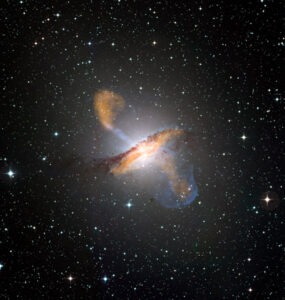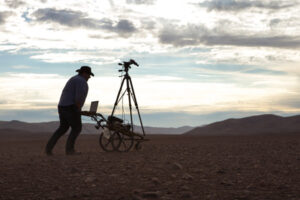

ESO/WFI (Optical); MPIfR/ESO/APEX/A.Weiss et al. (Submillimetre); NASA/CXC/CfA/R.Kraft et al. (X-ray)
A spectacular view of Centaurus A, a supermassive black hole, from the Atacama Pathfinder Experiment (APEX) telescope in Chile
If you were asked to name the driest place on Earth, you would probably first think of Africa’s Sahara Desert or maybe California’s Death Valley. Although these are good guesses, the driest place on Earth is actually Chile’s Atacama Desert. The Atacama Desert is located in northern Chile, west of the Andes Mountains, and stretches for more than 600 miles along the Chilean coast.
The Atacama Desert is made up of sand, salt basins, and lava flows. Scientists speculate that some regions of the Atacama have not received rain for as long as humans have recorded rainfall. As one might expect, the shortage of moisture has left the land barren and hostile. In 2015, however, the northern part of the desert received historic rainfall, bringing almost one inch—seven years’ worth—of rain in just twelve hours!

NASA
A scientist prepares the NASA Mars rover, Zoe. The rover will explore the coastal range of the Atacama Desert.
What significance could such a harsh environment hold? Due to its high elevation and lack of moisture-laden cloud cover, the Atacama is a prime location for space observatories. NASA researchers have discovered that the Atacama’s harsh, lifeless soil is very similar to the landscape of Mars. The similarities are so strong that NASA uses the Atacama terrain to test rover vehicles and instruments for Mars missions. They believe that knowledge they acquire from studying the terrain and searching for life forms in an extreme environment may hold the key to human outposts on the moon or Mars, and could increase the possibility of finding life on other planets.
Explore More:
1. Why is the Atacama region virtually rainless? Research what South American geographic features may contribute to the Atacama’s barren state.
2. In addition to testing rovers for Mars missions, research other uses for the Atacama’s extraterrestrial-like topography.
3. Although desolate at first glance, the Atacama does support life. Research what life exists and how it survives.